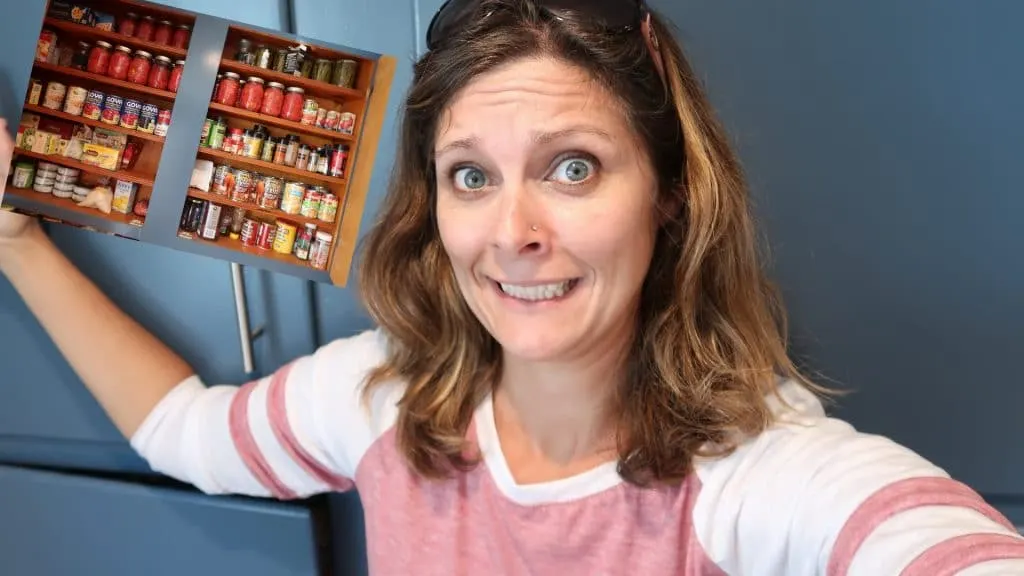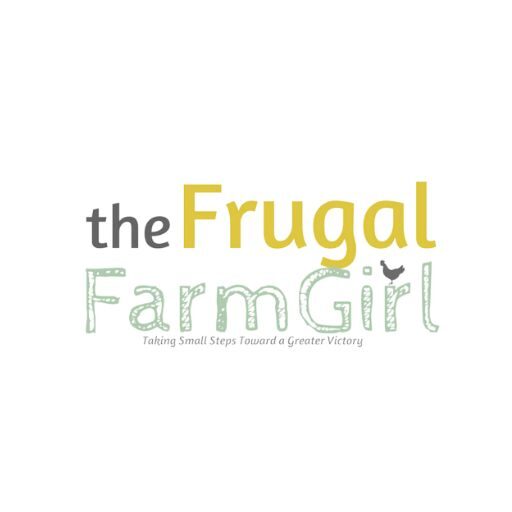Let me tell you about this little life hack I discovered a while back. It’s called a ‘Kitchen Freeze’ and a game changer.
I’m a bit of a food hoarder. I mean, who can resist a good sale, right? Thanks to extreme couponing back in the day, I’ve mastered the art of stocking up. ( Extreme couponing is still strong in 2024, and I’m joining along again this year)
But then I found myself with a pantry full of ingredients and a fridge bursting at the seams. And let’s not even talk about the freezer. I swear, every time I opened it, I was risking an avalanche of frozen peas and venison packs. So, I decided to do a kitchen freeze.
( I’ve included a seven-day meal plan at the end of this post for you, too!)

Now, what is a kitchen freeze, you ask? Well, it’s pretty simple. You stop buying groceries and start using up everything you have in your kitchen. It’s one of the best decisions you’ll make to use up what you have and save money while doing it.
First off, I saved a ton of money. It’s so easy to get caught up in the same routine of grocery shopping and not realize how much money you spend on food alone. This will force you to get creative in the kitchen.
I was making meals from things I didn’t even know I had. And the best part? I was reducing waste. No more throwing away wilted lettuce or moldy bread. Everything was being used.
And let’s talk about the benefits of freezing food. I used to think fresh was always better, but I was wrong. Freezing food allows us to hit the “pause” button on the natural aging process, preserving the nutrient content of the food. Plus, it’s a great way to store fresh meat, vegetables, soups, and leftovers.
But the real revelation for me was meal prepping. By preparing and freezing meals in advance, I saved time and money. No more last-minute takeout orders because I was too tired to cook. I had a freezer full of homemade meals ready to go.
So, should you do a kitchen freeze? Absolutely! It will save you money, reduce waste, and maybe even turn you into a master chef. But don’t just take my word for it. Give it a try and see for yourself.
I’ve been saving money and living on a tight $ 65-a-week grocery budget for years; in 2024, I would like to keep our weekly grocery and household spending to $150 or less. In 2024, I’ve also committed to extreme couponing again to reduce food costs with teens.
What is a Kitchen Freeze?
A Kitchen Freeze (I’m giving this my name!- for those who didn’t read before the bullets!) is a method of cooking that involves taking inventory of what’s your pantry, fridge, and freezer and planning meals and snacks around those ingredients.
Instead of buying new ingredients, you use what you already have, reducing food waste and saving money.

How to Get Started with a Kitchen Freeze
Step 1: Take Stock
Before you do anything else, we will need to know what we are working with. So, open up those cupboards, brave the depths of your fridge, and venture into the tundra that is your freezer.
Make a list of everything you’ve got. Yes, even that can of beans that’s been sitting in the back of your pantry.
Step 2: Get Organized
Now that you know what you have, it’s time to get organized. Group similar items, like pasta, canned goods, and baking supplies.
This will make it easier to see what you have and plan meals accordingly. Plus, it’ll prevent you from buying yet another jar of peanut butter because you couldn’t find the three you already had.
Label containers, group like-items together, and list ingredients that need to be used up.
My trick is to use this meal planning binder with a sheet for inventory stock to keep track of what’s in my kitchen and what needs to be used up.
Step 3: Meal Planning and Prepping
This is where the magic happens, folks. Look at your list and start planning meals around what you already have. Got some chicken, broccoli, and a box of pasta?
Sounds like chicken alfredo night to me. And remember, leftovers are your friend. Cook once, eat twice (or three times if you’re lucky).
If you are new to meal planning, stick to a week; otherwise, try to fill up a month’s worth of meals. I use my monthly meal planner sheet and fill it in with what I have as much as possible.
Use everyday ingredients as the foundation for your meals. Make a list of meals and snacks you want to make and start prepping in advance.
Ask your family for some of their favorite meals and write them down so you can fill those in for your monthly planner and have easy go-to meals you know your kids will like.
Chop vegetables, mix marinades, and cook staple ingredients such as rice, quinoa, and beans. This will save you time during the week and prevent last-minute takeouts.
Creating Meals from Common Ingredients
Don’t be afraid to get creative with your meals. Use leftovers from one meal to make a new dish the next day. Repurpose ingredients by making frittatas, stir-fries, soups, and salads.
Use herbs and spices to switch up the flavor profiles and prevent monotony. And if you’re feeling adventurous, try some new Kitchen Freeze recipes.
I will try to buy only fresh fruits and veggies for snacks and lunches each week. I will keep things like milk, creamer, etc., in the weekly budget. It helps to know how much money you can spend each week on groceries.
The Freeze
This is the easy part. Just stop buying groceries. I know it sounds scary, but it’s liberating. Use up what you have before you go shopping again. You’ll be amazed at how much money you save and how much less food you waste.
Doing a pantry or kitchen freeze helps you focus on how much we overspend on food we don’t need. Plus, when you cook for a month straight, you have built a healthy habit that is worth it.
I just did this for Jan. 2024, and I’m so glad I did. I will try to plan out every month for meals this year.
Here is a seven-day meal plan using everyday ingredients to get you inspired and started.
Monday:
- Breakfast: A good ol’classic: scrambled eggs with whole grain toast and mixed fruits.
- Lunch: Make-ahead chicken wraps with a side of veggies. Easy to pack, easier to devour!
- Dinner: Spaghetti Bolognese. Make a little extra sauce for WWednesday’sdinner.
Tuesday:
- Breakfast: Overnight oats with bananas. Healthy, filling, and made while you were dreaming.
- Lunch: Leftover spaghetti Bolognese. It tastes even better the next day, trust me!
- Dinner: Veggie stir-fry with whatever meat and colorful veggies you can find in your fridge.
Wednesday:
- Breakfast: Whole grain pancakes with a dollop of Greek yogurt and honey. Who said healthy can’t be yummy?
- Lunch: Stir-fry leftovers. The flavors have melded beautifully overnight!
- Dinner: Sloppy Joes using Monday’s leftover Bolognese sauce. Talk about a two-for-one deal!
Thursday:
- Breakfast: Egg and veggie muffins. Whip ‘e’emp, bake ‘e’emand voila! Breakfast is served.
- Lunch: Quinoa salad ( or whatever pasta/grain you have) with all your favorite veggies and some grilled chicken from MoMonday’sunch.
- Dinner: Baked fish tacos. Have some fish left over? WeWe’llse it tomorrow for lunch.
Friday:
- Breakfast: Berry smoothie bowl with granola. A berry is a good way to start the day!
- Lunch: Fish wraps using Thursday’s leftover fish. Waste not, want not, am I right?
- Dinner: Veggie pizza night! Grab those leftover veggies and toppings. Making your own pizza crust is also much cheaper!
Saturday:
- Breakfast: French toast with a side of mixed fruits. A little weekend indulgence never hurt anyone!
- Lunch: Leftover pizza from last night. Cold pizza, anyone?
- Dinner: Grilled chicken with roasted veggies and quinoa ( or whatever grain pasta you have)
Sunday:
- Breakfast: Avocado toast with poached eggs. A millennial classic for the win! ( I buy frozen avocados from BJs)
- Lunch: Chicken and veggie stir-fry using last night’s leftovers.
- Dinner: Lentil soup with crusty bread. Perfect for a cozy Sunday night.
I’m not alone in my love for the Kitchen Freeze. I’ve heard countless success stories shared on my Titkok page from moms and families who have saved money, reduced food waste, and discovered newfound culinary skills thanks to this simple concept.
I encourage you to try it out for yourself and share your success stories and tips in the comments section.
The Kitchen Freeze is a simple but powerful way to save money, reduce food waste, and spark creativity in the kitchen. I hope this blog post has given you some practical tips and tricks for implementing it in your home.
Remember to take stock of what you already have, plan your meals in advance, get creative with your ingredients, and share your success stories with us in the comments. Happy freezing!
